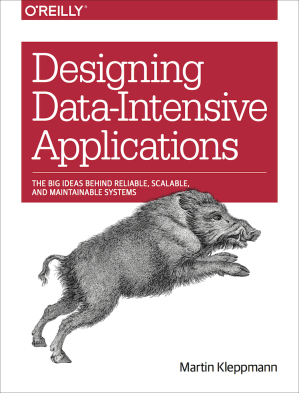
2021-02-02
After kicking off our technical book club at work over a year ago with The Art of PostgreSQL (see my review and summary), we took almost half a year of a hiatus before deciding to tackle another book—but in August, we decided to give Designing Data-Intensive Applications (DDIA) by Martin Kleppmann a go.

We “worked” on the book from August until December, and it was not exactly a breeze to read; I don’t think anybody regretted the time spent on reading and discussing, though.
This is not a short book by any standard, and a few typos in such a dense text would certainly be forgivable. However, I don’t remember seeing any at all. This book has been around for a few years, and the errata aren’t non-existent, but whatever process there is in place to fix typos resulted in the version I ended up reading being near-perfect.1
The level of care is exceptional also elsewhere. A pet peeve of mine are technical books with shell script snippets full of outdated and bad practices, as if it didn’t matter; I appreciate it all the more when an author cares about these little things as well. (And can you trust somebody who doesn’t quote their variables? Surely not.)
There are several examples where concepts are explained using simple shell implementations, for example the “world’s simplest database”:
db_set () {
echo "$1,$2" >> database
}
db_get () {
grep "^$1," database | sed -e "s/^$1,//" | tail -n 1
}Everything neatly quoted, no Useless Use of Cat,
no ugly (and not
even POSIX compliant) tail -1… perfect.
Each chapter starts with a beautiful map with locations named after the material introduced in the chapter. Kleppmann wrote a blog post about this where he explains that the regions stand for the concepts, and the cities are specific implementations. There was even a Kickstarter campaign for posters with all the maps!
I enjoyed looking at the maps before reading, seeing some terms I’d heard before and some I had no clue what they meant—and then coming back to the map after reading, and understanding why things are grouped together and what the concepts behind the names are.
Throughout each chapter, a ton of references are listed (about one hundred per chapter), so if I’m more interested in any topic (just because, or maybe because I’m working on a related problem), there’s no shortage of material to dive deeper. Almost every reference links to the source, and Kleppmann maintains a Git repository2 with updated links. (Now, if he would only merge my pull request with a fix…)
Reading this often felt like studying for a university exam: I would read and highlight, then go through the chapter again and write a summary for it. That’s of course not required, but I feel like I’m retaining much better like this. (If only I would have enjoyed studying as much when it would have been more useful!)
The book covered a lot I only have passing familiarity with (such as non-relational datastores), barely even knew existed (for example leaderless replication), or just took for granted without knowing how it works (like indexing). If I need to know more about a topic, I now know where to start.
For some concepts, I realized how incomplete my understanding had been (example: ACID and isolation levels), and I’m now at least aware of that. Know what you don’t know!
And, almost the biggest win for me, a lot more problems I encounter
or read about every day make a lot more sense now: I have a better idea
what approaches and tradeoffs there are, or at the very least I remember
that I should know what something is about—and then I can go
look it up. I can also drop more buzzwords in interviews now, which
always impresses everybody involved.
All in all, the book deserves all the praise it gets, and I can’t imagine anybody buying and reading it ending up thinking that either money or time was wasted.